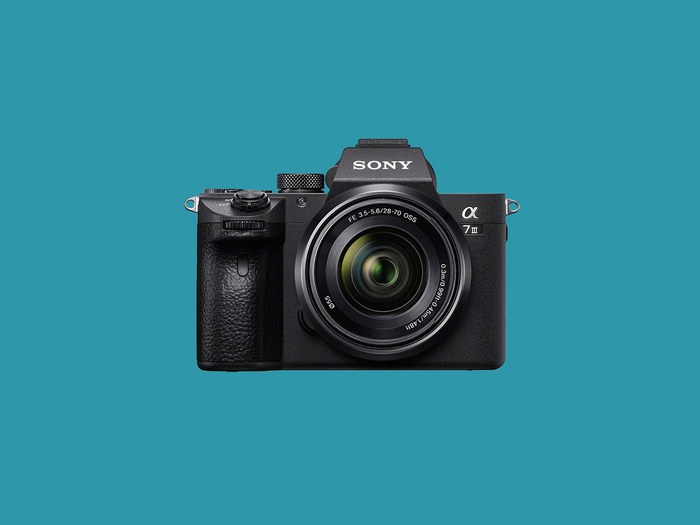YOU MAY THINK that your telephone’s camera takes staggering pictures—and it does. Be that as it may, regardless of how skilled your cell phone camera is, the nature of the photographs it takes can’t approach those you’d get from an undeniable camera.
One of the greatest deciding elements of picture quality is the span of the camera’s sensor—the chip that catches the light getting through the viewpoint. The iPhone XS Max, which has the best camera of the majority of Apple’s telephones, utilizes a sensor that is in excess of multiple times littler than the chip inside a professional quality full-outline camera. That endlessly bigger sensor wins you noticeably unrivaled powerful range—the capacity to hold detail in the most brilliant and darkest subjects—just as better low-light pictures, and more foundation obscure for representations.
Also, with a compatible focal point camera, you can pick the correct focal point for the activity—regardless of whether a fax for far off activity or a prime focal point for emotional representations. With a cell phone, you’re obliged by the physical confinements of the little bits of plastic, glass, and metal that are fixed into the camera module at the industrial facility.
And don’t worry about missing out on those Instagrammable moments. Modern cameras will wirelessly transfer photos to your phone in seconds, so you can easily share your far better pics on social media.
The expert standard for cameras is full-outline—which means, the sensor is the span of a bit of 35mm film. There have never been the same number of full-outline mirrorless cameras available as there are at the present time, and the incentive for cash is superior to anything it’s at any point been. Think about this: In 2005, Canon set an ease record for a full casing camera with the $3,300 12.8-megapixel 5D. The full-outline cameras you can purchase today are altogether far superior and begin at around 33% of that cost.
Until a couple of years prior, most lover and expert cameras were DSLRs, or Digital Single Lens Reflex cameras. They joined an advanced sensor with similar optics and mechanics of a film camera: You glance through an optical viewfinder, which is basically a switch periscope utilizing a mirror to see out through the viewpoint, and when you push the shade catch, the mirror precisely moves to uncover a sensor rather than a section of film.
In the interim, mirrorless cameras—without the flip-up mirror and optical viewfinder—kept on developing in prominence and advance in abilities. Mirrorless cameras have a couple of favorable circumstances over DSLRs.
To begin with, since they don’t depend on the little periscope system to convey a picture to the viewfinder, they utilize electronic viewfinders. These resemble little TV screens, so they’re simpler to use in obscurity, and they twofold as heads-up presentations for your present settings or data about the scene you’re catching. Disposing of the mirror—and by expansion, the system that moves the mirror when you press the shade catch—gives you an edge in different zones. For one, you can shoot absolutely quietly—simply press the catch and catch a picture with no mechanical “shade clamor.” The absence of a mechanical procedure likewise implies you can shoot quicker, regularly in blasts of at least 10 shots for every second. Ultimately, self-adjust is quicker in mirrorless cameras.
Sony presented the principal mirrorless full-outline camera in 2013. Numerous perfectionists adhered to their Canon and Nikon DSLRs; their essential thinking was that they effectively claimed a wide exhibit of focal points for those cameras, and Sony just had a couple at the time. However, Sony’s scope of full-outline focal points has developed in the mediating years, and outsider focal point creators have added to those contributions. Sony now has the biggest cluster of local and perfect focal points for their full-outline mirrorless cameras. In the course of recent months, Nikon, Canon, and Panasonic have all entered the full-outline mirrorless market. Despite the fact that clients who purchase those cameras can’t connect their old DSLR focal points they’ve invested years gathering without utilizing connectors, the innovation has at long last turned out to be irrefutable.
I took a hands-on take a gander at the absolute best full-outline mirrorless cameras available—the Sony a7III, Canon EOS R, and the Nikon Z6—to enable you to comprehend the full advantages of the overhaul. (Other new models, similar to the Panasonic Lumix S1, weren’t prepared for testing at the season of this composition.) I’ll go over how the new frameworks work with what you as of now have, and which framework will offer you the most adaptability for what’s to come. Every one of these cameras is splendid and equipped for creating magnificent pictures. For me, the upsides and downsides boiled down to more physical contrasts and highlights as opposed to specialized execution.

